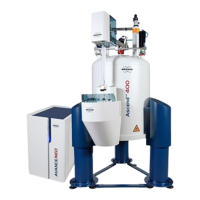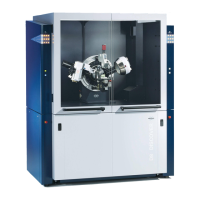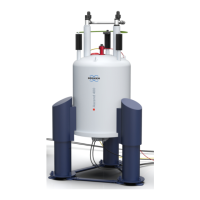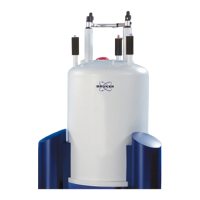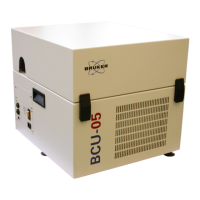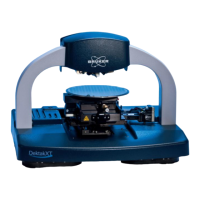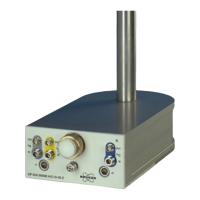System Description
H171804E_14_001 27 / 86
Although the HPPR/2 (High Performance Preamplifier) carries the transmitted signal to the
sample it is primarily concerned with magnifying the relatively weak signals emitted from the
sample. It is located at the base of the magnet to amplify the NMR signal at the earliest
possible opportunity and thus minimize losses along the cable. Once the signal has been
amplified with the HPPR/2 any subsequent losses in cabling are less critical. The HPPR/2
also transmits and receives the deuterium (or fluorine) lock signals and is used in the wobble
routine. Up to 8 (HPPR/2) individual modules (excluding the cover module which is always
present) may be configured. A very common configuration consisting of three individual
modules is a Proton, X-BB and 2H along with a cover module.
The probe is inserted into the shim system at the base of the magnet and essentially consists
of various coils used to transmit the excitation pulses to the sample as well as receive the
emitted signal. The probe also transmits and receives the lock signal.
4.5 The Magnet and Magnet Dewar
A range of magnets are available with different strengths. The strength of the magnet is
graded according to the frequency of the NMR signals emitted by hydrogen atoms. The
stronger the magnet field, the higher this hydrogen frequency. For example, with a 500 MHz
magnet (11.7 T), this means that when a chemical sample is placed in the magnet for
analysis, the
1
H atoms in the sample will emit signals with a frequency very close to 500 MHz.
Bruker magnets are available in the range of 300-1000 MHz.
Superconducting magnets are electromagnets, and as such make use of the fact that an
electric current produces a magnetic field. The magnet core consists of a large coil of current
carrying wire in the shape of a solenoid. At the center of the coil a very intense static
magnetic field exists. The sample to be analyzed is placed inside this magnetic field.
At very low temperatures certain materials show the remarkable property of
superconductivity. A superconducting wire carries electricity without the need for any driving
energy (i.e. battery or mains supply). Once a current is started in a superconducting loop it
will continue forever. Bruker magnets consist of such a superconducting loop. The only
maintenance required on the magnet is to ensure that the coil is kept immersed in liquid
helium.
The magnet consists of several sections. The outer casing of the magnet is evacuated and
inner surfaces are silvered (this is the same principle as a Thermos). Next comes a bath of
nitrogen which reduces the temperature to 77.35K (-195.8 °C) and finally a tank of helium in
which the superconducting coil is immersed in. This tank is thermally isolated against the
nitrogen bath by a second evacuated section (see picture below).
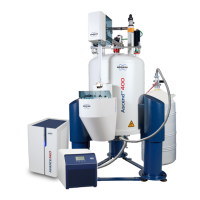
